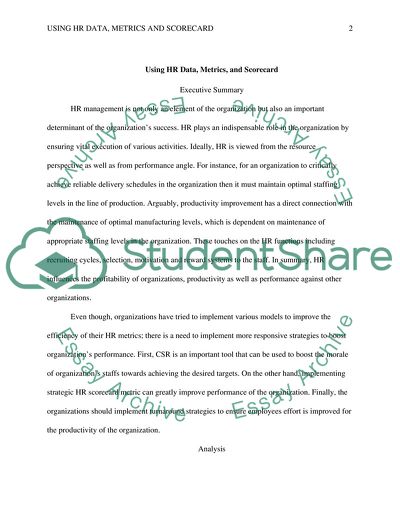Using HR Data, Metrics and Scorecard Case Study. https://studentshare.org/human-resources/1880979-using-hr-data-metrics-and-scorecard
Using HR Data, Metrics and Scorecard Case Study. https://studentshare.org/human-resources/1880979-using-hr-data-metrics-and-scorecard.


